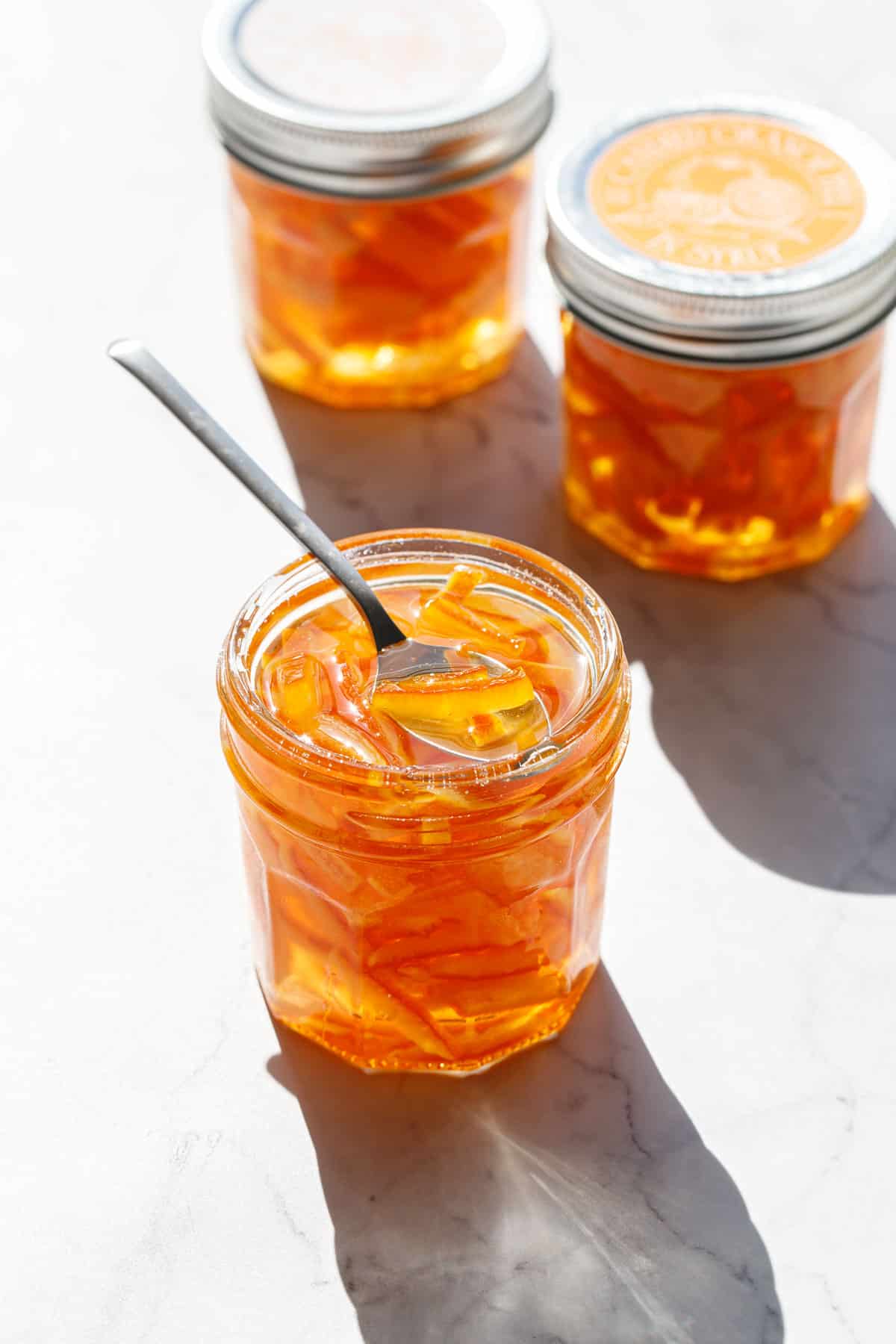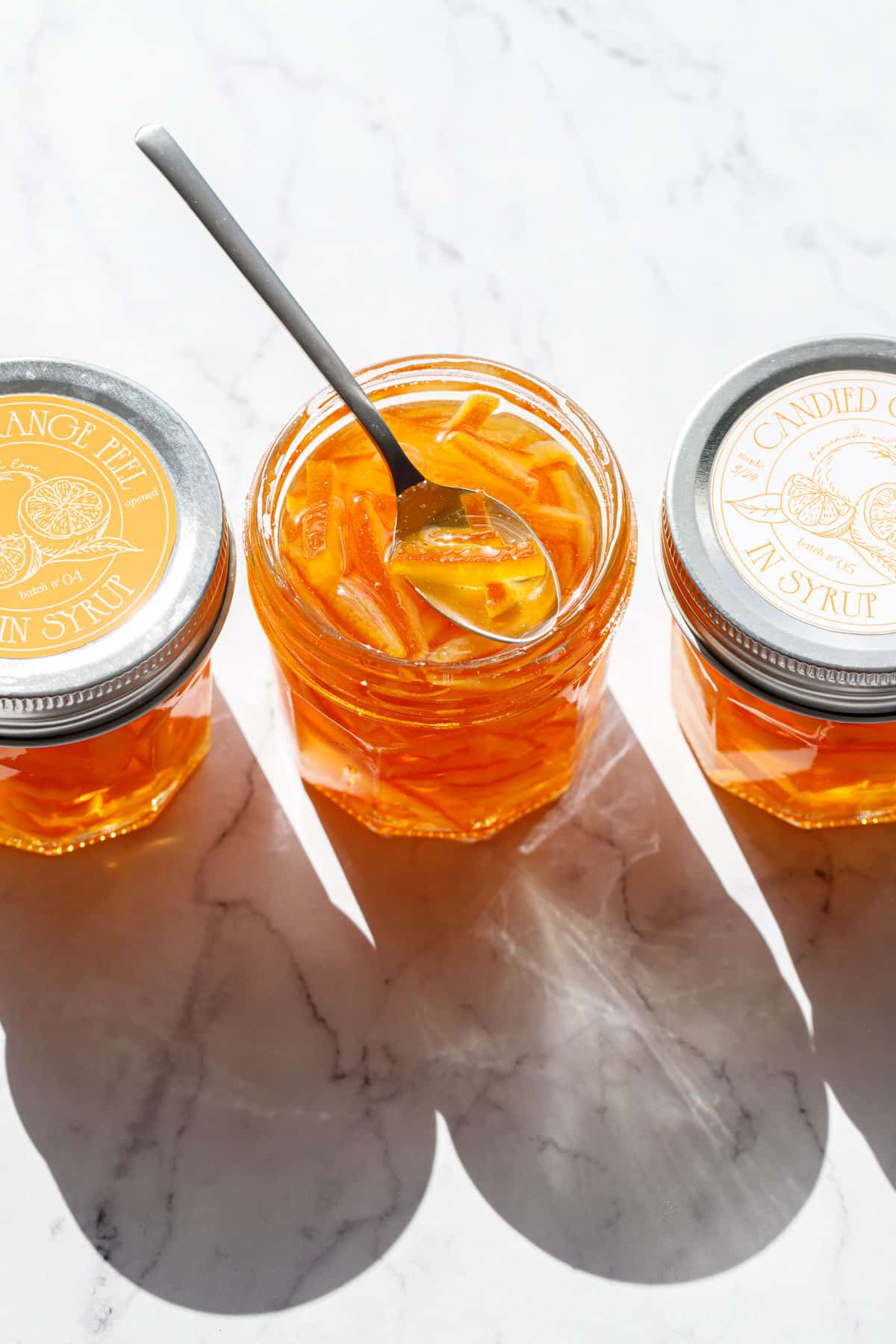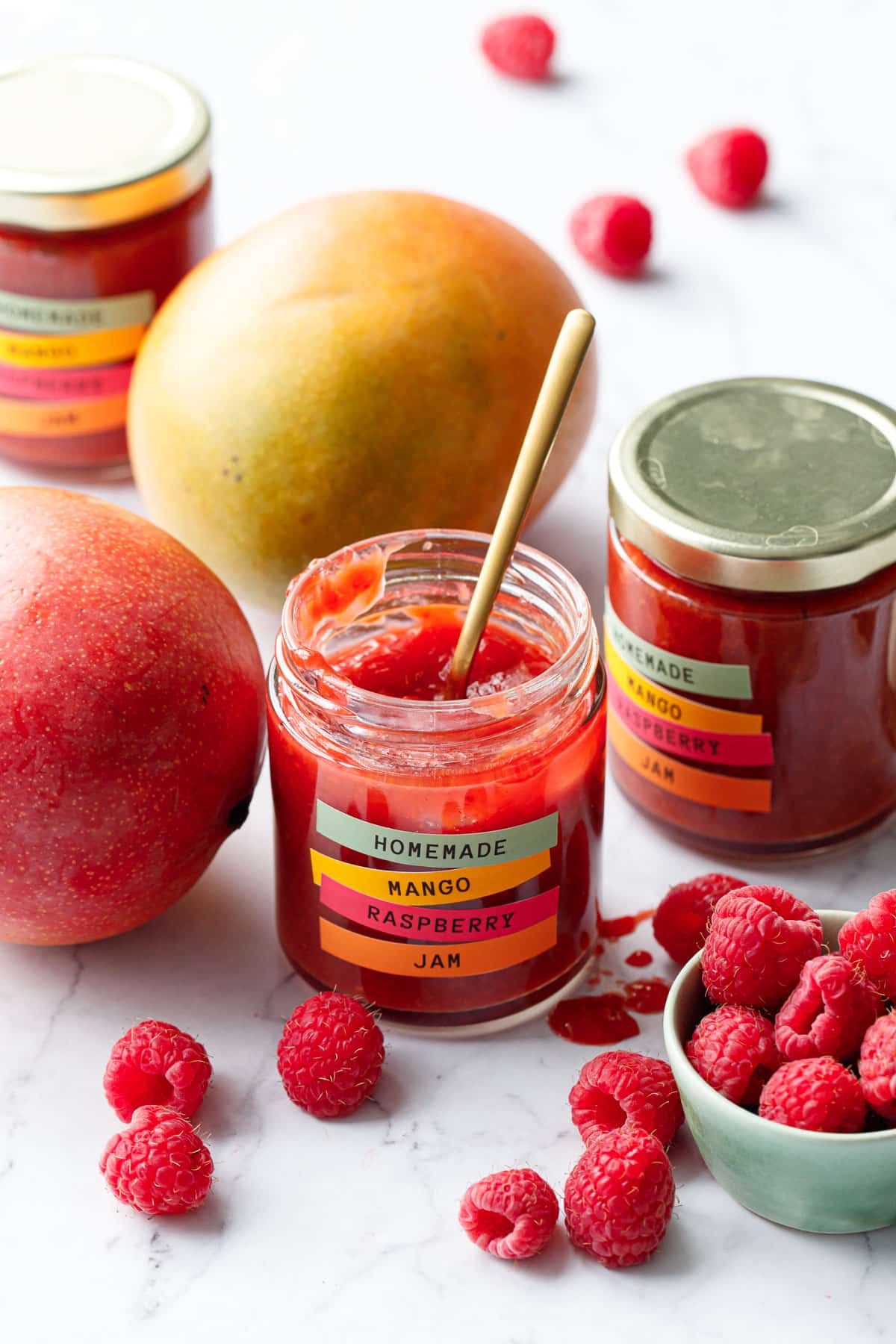Bitter and sweet, fruity and chewy, candied orange peel is one of citrus season’s under-appreciated treats. Whether spooned over ice cream, garnishing a fancy cocktail or mocktail, drizzled over pancakes, or chopped and mixed into cookies or scones, they are as versatile as they are delicious.
Pieces of tender, chewy candied orange rind swimming in a thick and sweet sugar syrup, lightly scented with honey and orange blossom water. This recipe has been thoroughly tested and expert reviewed to be safe for water bath canning methods for shelf-stable storage (that said, you don’t have to can them and can store the jars in the refrigerator or freezer too).

2024 is the year of the candied orange, apparently.
Seriously though, I don’t think I’ve let a weekend go by without at least one test batch of candied oranges in one form or another. I’ve probably gone through 25 pounds of oranges and upwards of 10 pounds of sugar at this point.
I am still finding sticky bits of syrup on various surfaces and even my camera buttons (oops).

So yes, I know I’ve already posted a recipe for candied orange slices (which I used to top these gorgeous Chocolate Blood Orange Cupcakes), but this recipe is slightly different in that it uses strips of orange rind rather than full slices, and it has been developed specifically so that, instead of drying, the peel is preserved in the syrup (you’ll notice it calls for a lot more sugar as a result, since we need enough syrup to fully cover all of the candied peel). Additionally, it’s been thoroughly tested and expert reviewed to be safe for water bath canning! Which makes it a great option to make now while citrus season is still in full swing so you can enjoy candied orange peel all year round.
(more…)